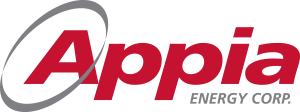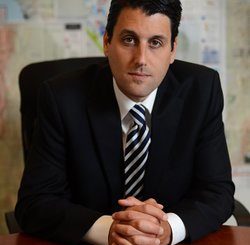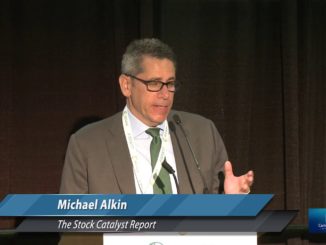
Mr. Tom Drivas to Present at Wall Street Reporter’s “Investors Discovery Day” Livestream Broadcast.
Toronto, Ontario–July 21, 2020 – Appia Energy Corp. (CSE: API) (OTCQB: APAAF) (FSE: A0I.F) (FSE: A0I.MU) (FSE: A0I.BE) (the “Company” or “Appia”) is pleased to announce the exploration and surface channel sample results from the recently completed exploration activities on the Eastside and Loranger properties, Athabasca Basin area, northern Saskatchewan.
Highlights include:
– i) a composite sample length of 65.75 metres returning 0.018 wt% U3O8 from within Area 51 of the Eastside property and
– ii) a 1.0 metre channel sample line returning 0.471 wt% total rare earth oxide (“TREO”) from Area D of the Loranger property.
EASTSIDE
The Company successfully identified numerous pegmatite dykes (“dykes“) in outcrops ranging in thickness from 1 metre to greater than 20 metres width exhibiting elevated radioactivity (>300 counts-per-second (“cps“)) (see Figure 1). A majority of the dykes could typically be followed for more than 10 metres along strike-length before being lost underneath overburden. Discrete trends (from 1 metre to 3 metres thick) within the dykes contained spotty anomalous radioactivity (>1,000 cps) to “off-scale” radioactivity (>9,999 cps). Two dykes with the most radioactivity rock exposure (Area 51 and Area 7575) were channel sampled and returned composite sample grades with uranium concentrations exceeding 0.01 wt% U3O8 (see Figures 1 and 2, and Table 1). Areas 51 and 7575 are on strike with each other but are separated by 1.5 km which is covered by overburden.
Four separate occurrences of “off-scale” radioactivity were identified along four different dyke trends, however only one of those was exposed well-enough at surface to be channel sampled (Area 51, Line 3 channel sample). Helicopter reconnaissance identified three large areas (>500 m x >500 m) with many dykes exposed at surface, however time was limited and those outcrops were not visited.
Mr. James Sykes, Vice-President, Exploration and Development, comments; “We are encouraged by the surface radiometric and assay results from the Eastside property. The multiple occurrences of “off-scale” and numerous trends of anomalous radioactivity demonstrate significant potential for surface-hosted uranium mineralization on the property. The composite U3O8 grades from Eastside are comparable to other world-class open pit uranium mines, such as the Rössing and Husab uranium mines in Namibia. Based on historic assay results and those obtained from Line 3 of Area 51, we believe zones with higher uranium grades are possible on the Property. The property remains underexplored as i) numerous prospective outcrops have yet to be visited, ii) the currently identified surface trends (i.e. over 1.5 km between Area 51 and Area 7575) would require overburden to be removed to fully realize the potential of the mineralized strike-lengths, and iii) diamond drilling has never been conducted on the property to fully realize the depth potential that might exist”.
Ground reconnaissance prospecting, mapping, and channel sampling was completed on the Eastside property over four days. A total of 139 channel samples ranging from 0.27 to 1.31 m in length were removed from outcrops in Area 51 and Area 7575 for a total of 77.69 m and 33.65 m, respectively.
LORANGER
Eight outcrop areas were visited on the Loranger property over a total of 3 days. Similar to the Eastside property, pegmatite dykes with elevated radioactivity were discovered within outcrops. Of particular interest was a pegmatite-rich outcrop area (Area D) with anomalous and elevated radioactivity trends observed within 100 to 300 m of a bifurcating and bending conductor. As has been observed on the property in previous exploration programs, radioactivity levels tend to increase with proximity to graphitic conductors suggesting the graphitic structural trends remain the primary focus for continued exploration on the property. No conductive outcrops were exposed on the property.
Area D was channel sampled, with no significant uranium values >0.01 wt% U3O8 obtained (see Table 1). The observed radioactivity was emanating from thorium rather than uranium. One sample line (line 7) did return anomalous rare earth element (“REE”) results of interest; 0.471 wt% TREO over 1.0 m (see Table 2).
The same geological formations at the southern end of the property can be inferred (by airborne magnetic signatures) to continue over 45 km to the north end of the property within the RCV and gravity low target areas that were drilled in 2017. Diamond drilling in the RCV area returned 72.9 m at 0.012 wt% U3O8 (see news release dated May 24, 2017).
Mr. James Sykes, Vice-President, Exploration and Development, comments: “This field program was instrumental in identifying geological controls that can help vector us towards more uranium mineralization on the property. Of interest is the new REE discovery on the property which does bear grades similar to those that have been observed at Appia’s Alces Lake high-grade REE property. Only one sample was taken from that trend and it remains open along strike in both directions for quite some distance. We plan to follow-up this area in the future”.
All radioactivity measurements were made with an Exploranium GR-110 hand-held scintillometer. The GR-110 readings max out at 9,999 cps, therefore any occurrences exhibiting 9,999 cps are considered “off-scale” because natural radioactivity can exceed 10,000 cps. Background radioactivity on all of the outcrops ranged from 100 to 200 cps. The reader is cautioned that Appia uses natural gamma-ray readings only as a preliminary indication of the presence of radioactive materials (uranium-, thorium- and/or potassium-rich minerals) and that the results may not be used directly to quantify or qualify uranium concentrations within the rock.
All samples were hand-delivered to and assayed by Saskatchewan Research Council’s Geoanalytical Laboratory, an ISO/IEC 17025:2005 (CAN-P-4E) certified laboratory in Saskatoon, SK, for multi-element analysis.
The technical content in this news release was reviewed and approved by Dr. Irvine R. Annesley, P.Geo, Advisor to the Board of Directors of Appia, and a Qualified Person as defined by National Instrument 43-101.
WALL STREET REPORTER’S “INVESTORS DISCOVERY DAY” LIVESTREAM
Appia would like to invite the general public to join Mr. Tom Drivas, CEO & President, for a live public webcast on Tuesday July 21, 2020, starting at 12:30 PM EST, as part of the Wall Street Reporter’s “Investors Discovery Day” livestream event.
The livestream can be accessed via the link below:
https://www.wallstreetreporter.com/investors-discovery-day-livestream/
About Appia
Appia is a Canadian publicly-traded company in the uranium and rare earth element sectors. The Company is currently focusing on delineating high-grade critical rare earth elements (“REE”) and uranium on the Alces Lake property, as well as prospecting for high-grade uranium in the prolific Athabasca Basin on its Loranger, North Wollaston, and Eastside properties. The Company holds the surface rights to exploration for 57,048 hectares (140,968 acres) in Saskatchewan.
The Company also has a 100% interest (subject to a 1% Uranium Production Payment Royalty and a 1% Net Smelter Return Royalty on any precious or base metals payable, provided that the price of uranium is greater than US$130 per pound) in 12,545 hectares (31,000 acres), with rare earth element and uranium deposits over five mineralized zones in the Elliot Lake Camp, Ontario. The Camp historically produced over 300 million pounds of U3O8 and is the only Canadian camp that has had significant rare earth element (yttrium) production. The deposits are largely unconstrained along strike and down dip.
Appia’s technical team is directed by James Sykes, who has had direct and indirect involvement with over 550 million lbs. U3O8 being discovered in five deposits in the Athabasca Basin.
Appia has 73.8 million common shares outstanding, 89.1 million shares fully diluted.
For more information, visit the Appia website at www.appiaenergy.ca.
Cautionary Note Regarding Forward-Looking Statements: This News Release contains forward-looking statements which are typically preceded by, followed by or including the words “believes”, “expects”, “anticipates”, “estimates”, “intends”, “plans” or similar expressions. Forward-looking statements are not guarantees of future performance as they involve risks, uncertainties and assumptions. We do not intend and do not assume any obligation to update these forward- looking statements and shareholders are cautioned not to put undue reliance on such statements.
Neither the Canadian Securities Exchange nor its Market Regulator (as that term is defined in the policies of the CSE) accepts responsibility for the adequacy or accuracy of this release.



